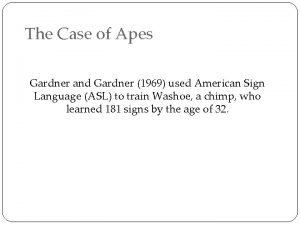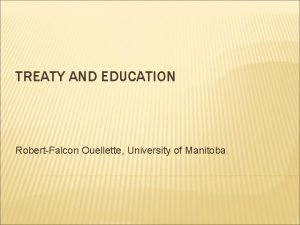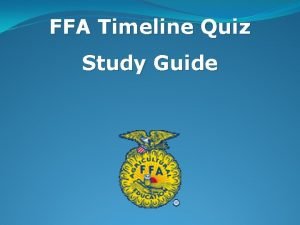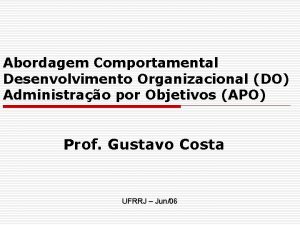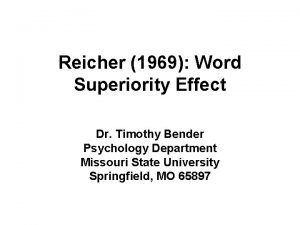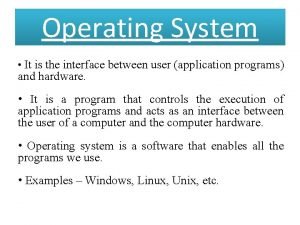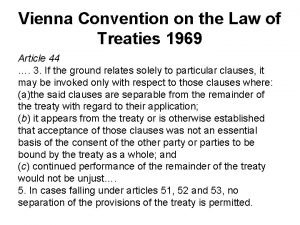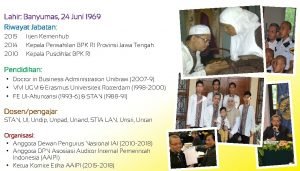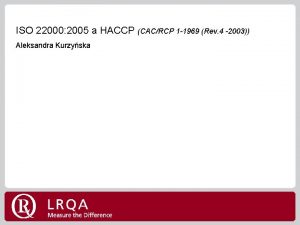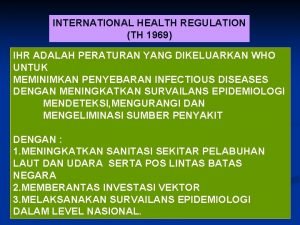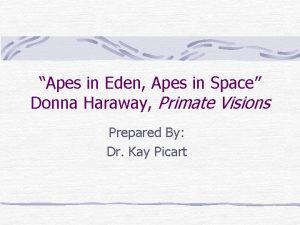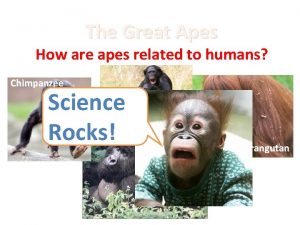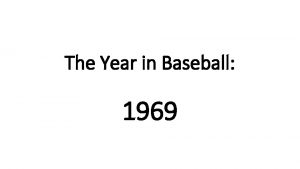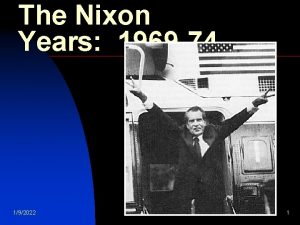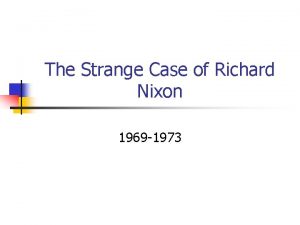The Case of Apes Gardner and Gardner 1969



































- Slides: 35

The Case of Apes Gardner and Gardner (1969) used American Sign Language (ASL) to train Washoe, a chimp, who learned 181 signs by the age of 32.

Gestured Communication Animals, like humans, exhibit communication through gestures. It is possible that vocal speech developed from gestures during the course of evolution.

But Can Apes Really Talk? 1. 2. 3. 4. Apes acquire their limited vocabularies with a great deal of difficulty, unlike children who develop vocabularies at amazing rates. Chimpanzees can make signs to receive a reward, just as a pigeon who pecks at the key receives a reward. However, pigeons have not learned a language. Chimpanzees use signs meaningfully but lack human syntax. Presented with ambiguous information, people tend to see what they want to see (perceptual set).

Sign Language American Sign Language (ASL) is instrumental in teaching chimpanzees a form of communication. Paul Fusco/ Magnum Photos When asked, this chimpanzee uses a sign to say it is a baby.

Syntax Comprehension Others have shown that pygmy chimpanzees can develop even greater vocabularies and perhaps semantic nuances in learning a language (Savage-Rumbaugh, 1993). Kanzi (shown below) developed vocabulary for hundreds of words and phrases. Copyright of Great Ape Trust of Iowa

Conclusions If we say that animals can use meaningful sequences of signs to communicate a capability for language, our understanding would be naive… Steven Pinker (1995) concludes, “chimps do not develop language. ”

Problem Solving Problem solving strategies include: 1. 2. 3. 4. Trial and Error Algorithms Heuristics Insight Our minds do not passively record information from the environment; rather, they actively select and interpret data. • Modify our mental structures (schema)

Algorithms, which are very time consuming, exhaust all possibilities before arriving at a solution. Computers use algorithms. SPLOYOCHYG If we were to unscramble these letters to form a word using an algorithmic approach, we would face 907, 200 possibilities.

Heuristics B 2 M Productions/Digital Version/Getty Images Heuristics are simple, thinking strategies that allow us to make judgments and solve problems efficiently. Heuristics are less time consuming, but more error-prone than algorithms.

Heuristics make it easier for us to use simple principles to arrive at solutions to problems. SPLOYOCHYG S PP SL YO CH YO OC LH OGY Put a Y at the end, and see if the word begins to make sense.

Insight involves a sudden novel realization of a solution to a problem. Humans and animals have insight. Grande using boxes to obtain food

Insight From Mark Jung-Beekman, Northwestern University and John Kounios, Drexel University Brain imaging and EEG studies suggest that when an insight strikes (the “Aha” experience), it activates the right temporal cortex (Jung. Beeman & others, 2004). The time between not knowing the solution and realizing it is about 0. 3 seconds.

Obstacles in Solving Problems Mental Set: perceive & approach problems in certain ways Confirmation Bias: A tendency to search for information that confirms a personal bias. 2– 4– 6 Rule: Any ascending series of numbers. 1 – 2 – 3 would comply. Wason’s students had difficulty figuring out the rule due to a confirmation bias (Wason, 1960).

Fixation: An inability to see a problem from a fresh perspective. This impedes problem solving. An example of fixation is functional fixedness. From “Problem Solving” by M. Scheerer. Copyright © 1963 by Scientific American, Inc. All Rights Reserved. The Matchstick Problem: How would you arrange six matches to form four equilateral triangles?

Candle-Mounting Problem Using these materials, how would you mount the candle on a bulletin board? From “Problem Solving” by M. Scheerer. Copyright © 1963 by Scientific American, Inc. All Rights Reserved.

The Matchstick Problem: Solution From “Problem Solving” by M. Scheerer. Copyright © 1963 by Scientific American, Inc. All Rights Reserved.

Candle-Mounting Problem: Solution

Becoming a More Skillful Problem Solver Eliminate Poor Choices Visualize the Solution Develop Expertise Think Flexibly

Making Decision & Forming Judgments Each day we make hundreds of judgments and decisions based on our intuition, seldom using systematic reasoning.

Faulty Thinking Worksheet

Using and Misusing Heuristics Two kinds of heuristics, representative heuristics and availability heuristics, have been identified by cognitive psychologists. Daniel Kahneman Courtesy of Greymeyer Award, University of Louisville and the Tversky family Amos Tversky

Representativeness Heuristic Judging the likelihood of things or objects in terms of how well they seem to represent, or match, a particular prototype. If you meet a slim, short, man who wears glasses and likes poetry, Probability thathis person is a truck driver what do youthat think profession would be? is far greater than an ivy league professor just because there are more truck drivers than such professors. An Ivy league professor or a truck driver?

Availability Heuristic Why does our availability heuristic lead us astray? Whatever increases the ease of retrieving information increases its perceived availability. How is retrieval facilitated? 1. How recently we have heard about the event. 2. How distinct it is. 3. How correct it is.

http: //education- portal. com/academy/lesson/heuristics. html

Overconfidence Intuitive heuristics, confirmation of beliefs, and the inclination to explain failures increase our overconfidence. Overconfidence is a tendency to overestimate the accuracy of our beliefs and judgments. In the stock market, both the seller and the buyer may be confident about their decisions on a stock.

Confidence Worksheet

Hindsight Bias the tendency people have to view events as more predictable than they really are. After an event, people often believe that they knew the outcome of the event before it actually happened. http: //www. youtube. com/watch? v=3 Rsbmj. NLQkc

LO 9. 10: How the way a decision is framed affects the choices people make Avoiding Loss Framing effect The tendency for people’s choices to be affected by how a choice is presented, or framed; for example, whether it is worded in terms of potential losses or gains

The Confirmation Bias The tendency to pay attention only to information that confirms one’s own beliefs

Counterfactual thinking Thinking about alternative realities and things that never happened Often takes the form of “If only…” constructions dealing with causes and consequences Copyright © Pearson Education 2010

Exaggerated Fear The opposite of having overconfidence is having an exaggerated fear about what may happen. Such fears may be unfounded. AP/ Wide World Photos The 9/11 attacks led to a decline in air travel due to fear.

The Effects of Framing Decisions and judgments may be significantly affected depending upon how an issue is framed. Example: What is the best way to market ground beef — as 25% fat or 75% lean?

The Belief Perseverance Phenomenon Belief perseverance is the tendency to cling to our beliefs in the face of contrary evidence. If you see that a country is hostile, you are likely to interpret their ambiguous actions as a sign of hostility (Jervis, 1985).

Perils & Powers of Intuition may be perilous if unchecked, but may also be extremely efficient and adaptive.

Inference or Observation Worksheet
 Gardner and gardner 1969
Gardner and gardner 1969 Best worst and average case
Best worst and average case Theodorson and theodorson 1969 communication
Theodorson and theodorson 1969 communication Walter gropius 1883-1969
Walter gropius 1883-1969 1969 white paper
1969 white paper Jane mixer gary leiterman
Jane mixer gary leiterman Sistemas unix
Sistemas unix Ffa creed quiz
Ffa creed quiz Dr charles homer lane
Dr charles homer lane Beckhard 1969
Beckhard 1969 Rip curl 1969
Rip curl 1969 Bipartição
Bipartição Reicher 1969
Reicher 1969 Which operating system is a multiuser os developed in 1969
Which operating system is a multiuser os developed in 1969 Ryan giggs wiki
Ryan giggs wiki 2012-1969
2012-1969 Cac/rcp 1-1969 rev 5 2020
Cac/rcp 1-1969 rev 5 2020 Grażyna skrzypaczka zm.1969 r
Grażyna skrzypaczka zm.1969 r Konvensi wina 1969
Konvensi wina 1969 Parts of the ffa emblem
Parts of the ffa emblem 1966 1967 1968 1969 1970 1971 1972 1973 1974 1975
1966 1967 1968 1969 1970 1971 1972 1973 1974 1975 Vclt 1969
Vclt 1969 July 1969
July 1969 Matriz bcg natura cosmeticos
Matriz bcg natura cosmeticos 24 juni 1969
24 juni 1969 Joseph beuys the pack
Joseph beuys the pack Lyndon b johnson 1969
Lyndon b johnson 1969 2005 - 1969
2005 - 1969 International health regulation adalah
International health regulation adalah Oms 1969
Oms 1969 Nariman committee 1969
Nariman committee 1969 1969 1970 1971 1972 1973 1974 1975 1976 1977 1978
1969 1970 1971 1972 1973 1974 1975 1976 1977 1978 Tinker v. des moines, 1969
Tinker v. des moines, 1969 The cold war heats up: 1945 - 1969
The cold war heats up: 1945 - 1969 Historia internetu prezentacja
Historia internetu prezentacja Copyright regulations 1969
Copyright regulations 1969
